THE GIMP1
Manny Farber
 FORWARD
FORWARD
 DOWNLOAD
DOWNLOAD
Somebody once told me, no doubt inaccurately, that lady golfers in the Victorian era used a certain gimmick that went by the name of “Gimp.” It was a cord running from hem of skirt to waistband; when preparing to hit the ball, you flicked it with your little finger and up came the hem. Thus suddenly, for a brief instant, it revealed Kro-Flite, high-button shoes, and greensward, but left everything else carefully concealed behind yards of eyeleted cambric. Something like this device has now been developed in Hollywood. Whenever the modern film-maker feels that his movie has taken too conventional a direction and is neglecting “art,” he need only jerk the Gimp-string, and—behold!—curious and exotic but “psychic” images are flashed before the audience, pepping things up at the crucial moment, making you think such thoughts as “The hero has a mother complex,” or “He slapped that girl out of ambivalent rage at his father image which he says he carries around in his stomach,” or “He chomps angrily on unlit cigarettes to show he comes from a Puritan environment and has a will of iron.”
Over the past couple of years one movie after another has been filled with low-key photography, shallow perspectives, screwy pantomime, ominously timed action, hollow-sounding voices. All this pseudo-undershot stuff, swiped from any and every “highbrow” work of films, painting, literature, has gone into ultra-serious movies that express enough discontent with capitalist society to please any progressive. In these beautifully controlled Freud-Marx epics, the only things that really move are the tricks and symbols designed to make you think, “God, this is sensitive!”
Somehow the nature of this new mannerist nicker has been misinterpreted by critics, by the good ones as well as the merely earnest publicists. With their preconceptions, their ennui, and their formularized responses to stimuli, the critics go their complacent (or disgruntled) ways, finding movies better (or worse) than ever, but never noticing that movies aren’t movies any more. Not so long ago, the movies, whatever their over-simplifications and distortions, still rested on the assumption that their function was to present some intelligible, structured image of reality—on the simplest level, to tell a story and to entertain, but, more generally, to extend the spectator’s meaningful experience, to offer him a window on the real world. What are they now?
Well, icebergs of a sort, one-tenth image, action, plot, nine-tenths submerged popular “insights” a la Freud or Jung, Marx or Lerner, Sartre or Saroyan, Frost, Dewey, Au-den, Mann, or whomever else the producer’s been reading; or they are Dali paintings, surrealist fun-houses with endless doors leading the spectator to inward “awareness” and self-consciousness, and far away from a simple ninety-cent seat in a simple mansion of leisure-time art and entertainment; or they are expressionistic shotguns peppering the brain of that deplored “escapist” with millions of equally important yet completely unrelated pellets of message—messages about the human personality and its relations to politics, anthropology, furniture, success, Mom, etc., etc. The trick consists in taking things that don’t belong together, charging them up with hidden meanings, and then uniting them in an uneasy juxtaposition that is bound to shock the spectator into a lubricated state of mind where he is forced to think seriously about the phony implications of what he is seeing.
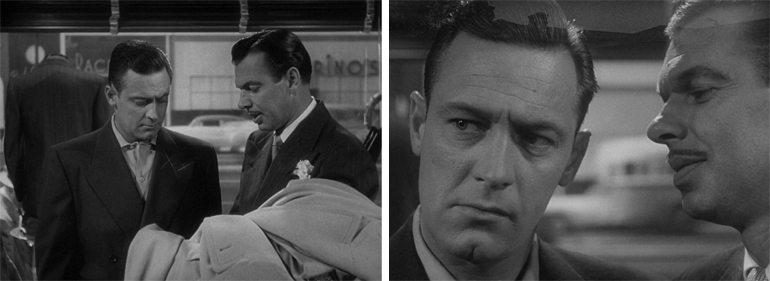
Most readers will remember the calculated moment in Sunset Boulevard —the kept man in the fashionable men’s shop, ashamed of buying the camel’s-hair coat with the ex-star’s money. Up to a certain point, this scene was unfolded in a straight narrative line, and then director Wilder pulled his Gimp-string. The camera moved in for a very close close-up, the atmosphere became molecular and as though diseased-and there was a sleek clerk whispering to the slightly ill gigolo: “After all, if the lady is paying. . . .” Thus Wilder registered spiritual sickness and business-world corruption in an ad-libbed shot that had all the freshness of an old tire patch, consisting as it did, under the circumstances, of naive moral gibberish that no adult in his right mind would mouth. This indirect shot, with its leaden overpantomiming going back to and beyond Theda Bara, offers a classic example of what the Gimp can do for a director, helping him avoid monotony (by switching from storytelling to symbolic “pseudo-action”), explaining hidden content, and insuring his position in movies as a brave, intransigent artist.
One of the most confusing films of all time, People Will Talk, dealt with an unflaggingly urbane gynecologist, a liberal-minded doctor who cured patients with friendliness, played with electric trains, scoffed at radio programs and packaged food, and generally behaved like a Lubitsch portrait of an enlightened college professor. One scene showed him making vague epigrams and looking down his nose at overconscientious note-takers in an anatomy class. Obviously all this suavity needed some excitement, and so Director Mankiewicz jerked his string and provided the well-analyzed doctor with a weird trick that you’ll never see again in a movie. The doctor undrapes the corpse on the slab before him, and-surprise!- you are looking at a naked brunette, not only the most ravishing person in the movie but the whitest and least dead-looking. While the doctor talked on about heartless people and gracefully did things with the corpse’s Godivalike tresses, the audience was so shocked by the beauty and lifelikeness of the corpse that it started thinking all sorts of things about how society nags the individual, even unto death. (Visually, in the best Gimp tradition, this scene was bewitching for its pure unusualness; Cary Grant’s classy erotic playing with the dead girl evokes a compound of evil, new kinds of sex, and terrific grace.)
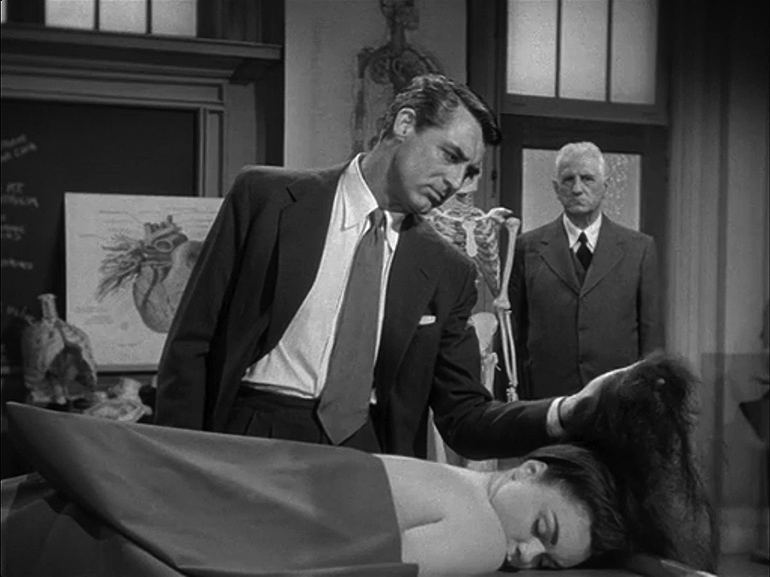
The Gimp is the technique, in effect, of enhancing the ordinary with a different dimension, sensational and yet seemingly credible. Camera set-ups, bits of business, lines (“They don’t make faces like that any more”) are contrived into saying too much. Every moment of a movie is provided with comment about American society. “Original” characters are sought, the amount of illogical and implausible material is increased, to such a point that movies which try to be semi-documentary actually seem stranger than the Tarzan-Dracula-King Kong fantasy.
We are getting such characters as the abortionist in Detective Story, a close-mouthed Dutchman dressed like a low-paid, respectable clerk from an early Sinclair Lewis story about department store life in the Midwest. To make him look as though he has emerged from the bowels of common life in America, he is given a pinched, deathly pallor and a sickly personality that hardly allows him to breathe, much less talk. The apparent intention was to set up a significantly ordinary, true-to-life, entirely evil, grass-roots American; the result was a surrealistic creature who seemed ready at any moment to throw up. Thanks to the canny acting of George Macready, possibly Hollywood’s most impressive character actor, this sour figure provided the film with its only good moments.
Two recent pictures have made especially adroit and unrelenting use of the Gimp. In A Place in the Sun, Director George Stevens, not content with letting a climax of violence follow naturally upon an inevitable train of events, treats us constantly to macabre darkenings of the landscape, metronome-timed hootings of a loon, and about six other sensational effects reeking with recondite significance. The story is about a not quite bright social climber, and Stevens so buries him in symbols of money, dominance, and sex that every last member of the audience must become involved with the vague meanings of the boy’s daydreams. Wherever he walks, there is sex or wealth—usually both together—written out so big that no one can miss it: billboards that out-Petty Petty, languid and sophisticated aristocrats, a Gus Kahn love lyric coming from a midget radio. And of course his dingy furnished room in a depressed urban area must have a window facing on a huge neon factory sign standing for wealth and achievement.
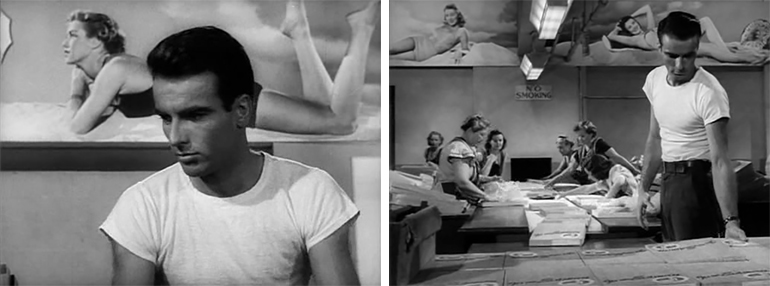
In one protracted example of contrivance, a luscious babe in a Cadillac flashes by the boy as he hitchhikes on some spacious highway, and then comes a broken-down truck chugging straight out of The Graces of Wrath to pick up the disappointed hiker. Immediately, the audience was saving to itself one or all of these things: “This is about the unfair distribution of wealth in the United States,” or “His spirit is crying out for joy, ease, and love,” or “He has a complex about being raised in a poor, harsh, confined neighborhood.” Whenever any particularly delectable symbol crossed the boy’s line of vision, he would freeze up with yearning, refusing to act, not answering questions for minutes on end, his wispy shoulders almost but not quite jerking, and occasionally one dead word straying out of his twisted mouth. There were eccentric scenes in which the boy met up with a deputy cop or a suspicious boatman, who—with the help of acting that was probably coached by Emily Brontë, and camera angles that gave the actors height and took away width-looked like ominous scoundrels from the Dark Ages, and showed you Society intimidating the Outcast, American Justice breaking the Common Man on the wheel.
Symbols are a dime a dozen in Hollywood’s storehouse, and Stevens bought up the stock; police sirens, train whistles, double-shots of a boy’s face and a remembered kiss, the lame leg of the sadistic district attorney (which makes him more formidable), a shadow going over a face to indicate an evil thought. Such things may seem to come from real life, but actually they are the products of medieval imaginations capable of grasping glaring features of contemporary life only in cliché terms. These creators have entrenched themselves within a vicious circle of decay: having helped to create and foster the world of lurid wealth, romantic love, and Big City glamour, they now express despair and chaos by exaggerating the same corny symbols they originally invented.
It has always been obvious that the movie camera not only reflects reality but interprets it. This fact used to imply the deepening and enrichment of an intelligible structure of plot and character. What is happening now is the complete disappearance of reality in the fog of interpretation: the underground “meaning” of every shot displaces the actual content, and the movie-goer is confronted with a whole crowd of undefined symbolic “meanings” floating entirely free. Shove the camera up against the pimple on an actor’s face, and you automatically produce an image of immense importance: it will mean something—no matter if you don’t know exactly what, and no matter if you have made it impossible to tell your story. Just as comedians now manufacture their humor out of immense card indexes of gags, so movie directors dip into their mental gag file of disconnected bits of social significance, amateur psychiatry, and visual shock effects.
In A Streetcar Named Desire, Elia Kazan pulls the Gimp-string so mercilessly that you never have one plain character or situation, but vast bundles of the most complicated sociological phenomena. For example, the hero, a sharp-witted Polish mechanic, conveys heavy passion by stuttering the first syllables of his sentences and mumbling the rest as though through a mouthful of mashed potatoes, a device that naturally forces the spectator to sociological speculation; disgusted with the fact that the hero has apparently been raised in a pigpen, the spectator is impelled to think about the relation of environment to individual development. This hero of Kazan’s is getting ahead in his work, is a loving husband, makes “those colored lights” with his sexual genius, and is possessed of a delicate moral sensitivity. But all these bourgeois attributes have to be matched with their opposites for the sake of excitement, and so Kazan pulls his string and you see the Polack slobbering, licking his paws, howling like a troglodyte, hitting his wife so hard that he sends her to the maternity hospital, playing poker like an ape-man, exuding an atmosphere of wild screams, rape, crashing china, and drunkenness. And to make sure every two-year-old will understand how bad life is in this Grimm’s fairy tale hovel, Kazan hammers his point home with continual sinister lights, dancing shadows, gaseous oozings.
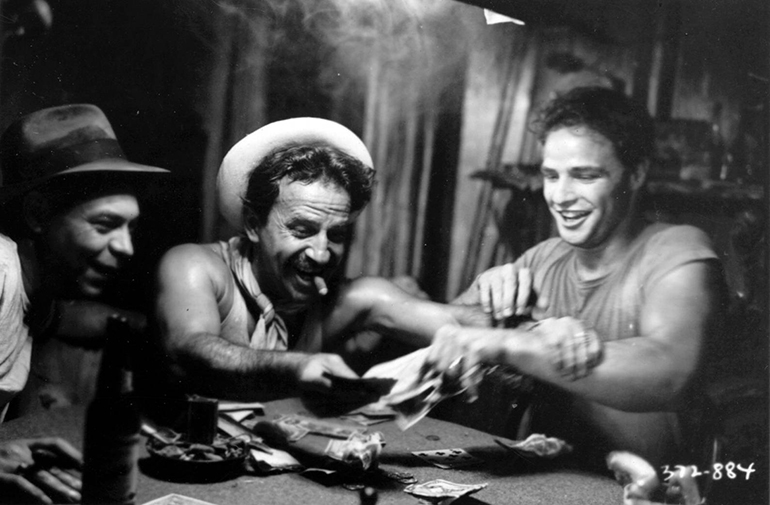
With its freakish acting, nightmare sets, and dreamy pace, Streetcar may seem like traditional Hollywood poeticism, but looked at closer, it becomes very different from movies of the past, and in the same odd, calculated way as A Place in the Sun, People Will Talk, etc. For one thing, the drama is played completely in the foreground. There is nothing new about shallow perspectives, figures gazing into mirrors with the camera smack up against the surface, or low intimate views that expand facial features and pry into skin-pores, weaves of cloth, and sweaty undershirts. But there is something new in having the whole movie thrown at you in shallow dimension. Under this arrangement, with the actor and spectator practically nose to nose, any extreme movement in space would lead to utter visual chaos, so the characters, camera, and story are kept at a standstill, with the action affecting only minor details, e.g., Stanley’s back-scratching or his wife’s lusty projection with eyes and lips. On the screen these grimly controlled gestures appear huge, florid, eccentric, and somewhat sinister. Again, there is nothing new about shooting into incandescent lights and nebulous darks, but there is something new in having every shot snotted up with silvery foam, black smoke, and flaky patterns to convey decay and squalor. Never before has there been such a use of darkness in masses as we find in the new films (at least not since the Russians, who probably didn’t have any lights). All this to jazz up a pseudo-drama in which nothing really happens on the screen except dialogue in which you see two faces talking, then a close-up of the right speaker asking, then a close-up of left speaker answering, then back to the two, etc. The spectator is aware that a story is being told, but mostly he feels caught in the middle of a psychological wrestling match.
Though there has never been so massive a concentration on technique, the fact is these films actually fail to exploit the resources of the medium in any real sense. Kazan, Stevens, and their colleagues have been shrinking films down to an almost babyish level in situation and grouping. With slumbrous camera movement, slow choreographies of action, sustained close-ups of enigmatic faces surrounded by areas of gloom, and drifting dialogue that seemed to come out of the walls, Stevens in A Place in the Sun had time only to unreel in grandiose terms a kiss, a seduction, and a drowning that would have taken him all of five minutes to examine with the straight story-telling technique he used in Penny Serenade and Alice Adams, both of which he made in the 30’s. Streetcar, for dramatic action, shows one big character—a neurotic Southern girl on the last lap to the mental ward—in one main situation: talk, talk, talk with an uninhibited couple in a two-room apartment. The African Queen was shot entirely in the Belgian Congo, but the characters do almost nothing that couldn’t have been done on one studio set with the aid of some library shots.
Movies have seldom, if ever, been so physically overbearing in their effect. The scenarios are set up so that the story can be told with a small cast, little movement, and few settings. The camera fastens itself on the actors with such obsessive closeness that every moment becomes of overwhelming importance and threatens to disclose some terrifying psychic or emotional fact. The effect becomes even stronger and more curious when the actors occasionally move across the room and this all-revealing eye just barely moves to keep them in focus-as in Something to Live For, when a worried advertising ace paces his office, while the camera seems to move back and forth no more than a fraction of an inch. One has the feeling that nothing is any longer of importance except a magnification of face, gesture, and dress, and that these can tell you all you need to know about life in our time.
All this seems to have started in an exciting. if hammy 1941 picture called Citizen Kane. This grim mixture of suspense thriller and tabloid obituary, in which most of the surface facts paralleled events in the career of William Randolph Hearst, combined the thunderous theatrical trickery of Orson Welles with a reckless use of darkish photography and funny angles by a top cameraman named Gregg Toland. Toland threw into the film every device ever written into the accomplished cameraman’s handbook-everything from under-cranking (to make the people in “newsreel” clips jerk and scuttle) to crane-shots, two-shots, floor-shots, and his favorite perspective shot in which figures widely spaced and moving far off down long rooms were kept as clearly in focus as the figure closest to the audience. This stuff helped make an exciting film, though marred by obvious items of shopworn inspiration: camera angles that had been thoroughly exploited by experimental films, and the platitudinous characterization of Kane as a lonely man who wanted love from the world but didn’t get it because he had no love of his own to give. This unpeeling of a tycoon was clearly the most iconoclastic stroke in major studio production since the days when D. W. Griffith and his cameraman, Billy Bitzer, were freeing movies from imitation of the stage. Orson Welles’s bold jumbling of techniques from theater, radio, and film led inevitably to a shock-happy work that anticipated everything that has since become fashionable in American films.
Oddly enough, this film, which had the biggest cultural build-up before release since Eisenstein’s Mexican film, made little impression at the time on Hollywood’s veterans. Only a few years ago did the ghost of Citizen Kane start haunting every “A” picture out of Hollywood. Before the advent of Orson Welles, the most important thing in motion picture technique had been the story, the devising, spacing, and arranging of shots into a plot line that moved easily from one thing to another. Welles, more concerned with exhibiting his impudent showmanship and his deep thoughts about graft, trusts, yellow journalism, love, hate, and the like, fractured his story all along the line, until his film became an endless chain of stop effects. At every instant, the customer was encouraged to pause over some Kubla Khan setting, some portentously lit floor-shot of an actor, or some symbol (the falling-snow toy, the bird screaming in escape), and think in the terms of what it had to tell about a publisher’s immoral pursuit of love-power-respect. The plot was simple enough: a famous man said something (“rosebud”) just before dying in his castle on a mountain, and “March of Time” sent out an inquiring reporter to make a story out of it. Eventually we did get the answer, not through the flash-backed memories of those interviewed—Kane’s oldest friend, his newspaper manager, the girl, the butler in the castle—but in a final nerve-tingling shot, privy to the director and audience, of the “Rosebud” sled of Kane’s lost, barren childhood. The story was presented in such complicated ways and made so portentous with the shadows of meaning cast off by a hundred symbols that you could read almost anything into it, including what Welles had put there. There were certain dramatic high points like the rough-cut in the “March of Time” projection room, the kid outside the window in the legacy scene, and the lurid presentation of an electioneering stage. But in between these was a great deal of talk, much less action, and almost no story.
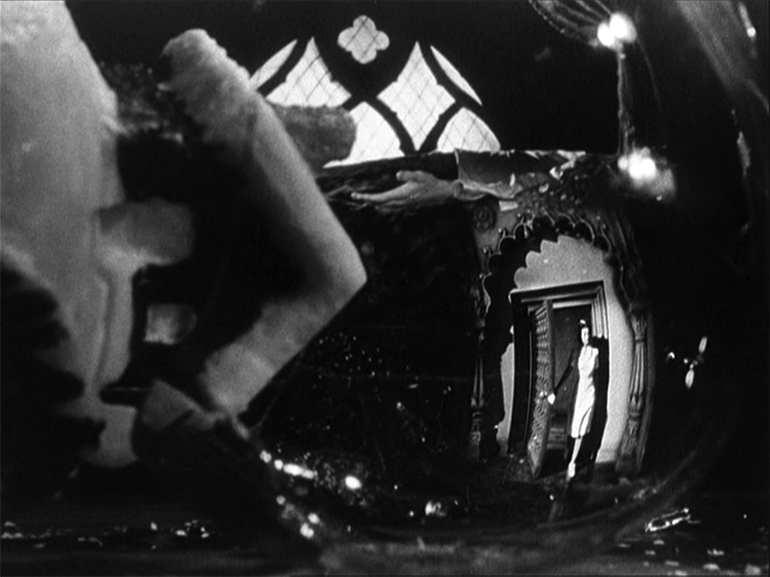
Welles bequeathed to Hollywood, which had grown fat and famous on hurtling action films, a movie that broke up into a succession of fragments, each one popping with aggressive technique and loud, biased slanting of the materials of actual life. He told his story backward—which was nothing new—and slowed it even more by breaking it into four situations that didn’t flow together but settled stiffly and ambiguously into a sort of parallel construction. He also complicated and immobilized each shot with mismated shock effects that had never been seen before in Hollywood. For example, the ominous figure of Kane was shown in the dark alongside a clearly lit pseudo-Grecian statue and a vast undone jigsaw puzzle that the cameraman had cleverly shot so that it seemed strewn over a marble floor. The spectator had trouble arranging these disparate items into a convincing visual whole, but his brain was mobilized into all sorts of ruminations about avarice, monomania, and other compulsions. Even the devices for moving the story along were complicating and interrupting: again and again, you went from the first part of a sentence spoken at one time and place to the last part of the same sentence spoken years later; this made one less conscious of time passing than of a director stopping time to play a trick on reality.
Welles also showed the Hollywood craftsmen how to inject trite philosophy, “liberalism,” psychoanalysis, etc., into the very mechanics of movie-making, so that what the spectator saw on the screen was not only a fat, contrived actor screaming down a staircase, but also some exotically rendered editorializing contributed by everyone from the actor to the set designer. The movie opened and closed on the iron fence around Kane’s castle. In between this repetition, which spelled out the loneliness and baronial character of a tycoon, were similarly meaningful images: Kane in his castle among the boxed accumulations of his collecting; hopeful and innocent Kane gesticulating in front of a huge electioneering poster that showed him as a sinister demagogue. And always, practically on top of the cameraman, his unreal figure suggesting a blown-up cue ball adorned with the facial features of Fu Manchu, with nothing inside him but a Freudian memory giggling around in the fumes cast off by Welles’s ideas about how an American big shot goes wrong.
The hidden meanings and the segmented narration were the two most obvious innovations of this film. Toland’s camera provided the third, and it was anything but what you’d expect from a film that was advertised as using an unbound camera. Toland’s chief contribution was a shallow concept of movie space. His camera loved crane-shots and floor-shots, but contracted the three-dimensional aspect by making distant figures as clear to the spectator as those in the foreground. To accomplish this, Toland had to arrange his actors in widely spaced, parallel arrays across the screen. He also had to immobilize them and cut them off from the natural obscurations of scenery and atmosphere. His powerful lens did the rest. The spectator was faced with an image that exaggerated the importance of the figures it showed to a point where the deep space between them seemed to have been negated. The chief visual effect was the microscopically viewed countenance, one into which you could read almost anything. Almost as important was the static grouping of figures, amounting to a reversal of everything Hollywood had previously perfected in the creation of fluid groupings in unbounded space.
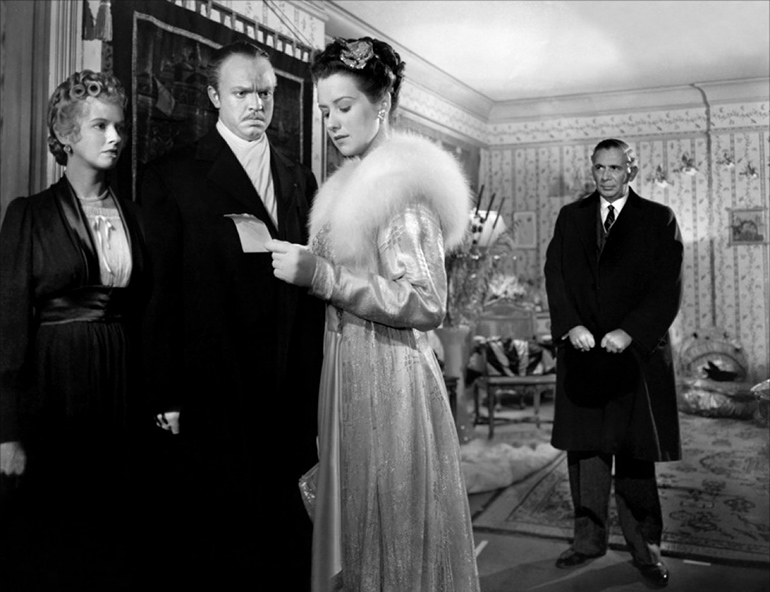
Citizen Kane and its Gimp-effects were generally laughed off by highbrows in Hollywood and elsewhere. Their opinion of the film was that it was too obviously theatrical and exhibitionistic to be linked to the main journalistic path of cinema. But one had the feeling, during the war years, that as Hollywood turned out dozens of progressively more realistic action films—Western, war, detective—it was more than a little concerned with what Welles had done in the symbolic enriching of a movie through florid mannerisms. For Hollywood directors and actors couldn’t forget that Citizen Kane was crazily three-dimensional in the manner of a psychoanalytic hour and that it did start you thinking at every moment of ambiguous drives hidden inside each character. Citizen Kane seems to have festered in the Hollywood unconscious until after the Wylers and Hustons returned from their government film chores; then it broke out in full force.
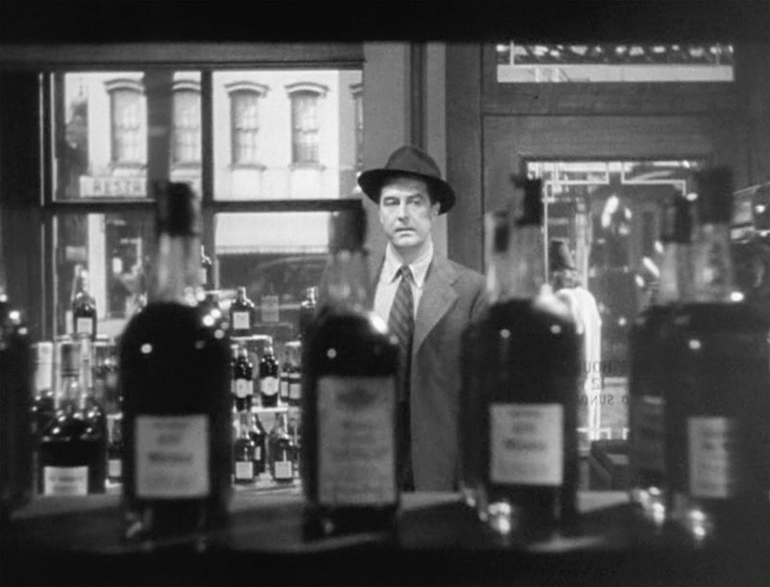
In the acclaimed films of the early postwar years (The Lost Weekend, The Best Years of Our Lives, The Treasure of the Sierra Madre, Champion), one began to see Welles’s theatrical innovations effectively incorporated into certain films that otherwise tried to look like untouched records of reality. There still had to be a long training in what is known as “semi-documentary” technique (movies shot in real streets with non-studio make-up, natural lighting, spontaneous pantomime) before Hollywood could link Welles’s florid symbolism with enough of the appearance of actuality to make it appear moderately reasonable. But by now the lesson has been learned, and the ghost of Citizen Kane stalks a monstrous-looking screen. The entire physical structure of movies has been slowed down and simplified and brought closer to the front plane of the screen so that eccentric effects can be deeply felt. Hollywood has in effect developed a new medium which plays odd tricks with space and human behavior in order to project a content of popular “insights” beneath a meager surface.
Thus has a revolution taken place in Hollywood, probably unbeknownst to the very men—directors, actors, and critics-who have led it. If the significance of the New Movie is understood, it may well be that Hollywood will never be able to go home again. Any attempt to resurrect the old flowing naturalistic film that unfolds logically and takes place in “reasonable” space seems doomed to look as old-fashioned as the hoop skirt. For better or worse, we seem stuck with an absurdly controlled, highly mannered, over-ambitious creation that feeds on everything in modern art and swallows it so that what you see is not actually on the screen but is partly in your own mind, partly on the screen, and partly behind it. You have to read these pictures in a completely different way from the one you’ve been accustomed to. They are no longer literally stories or motion pictures, but a succession of static hieroglyphs in which overtones of meaning have replaced, in interest as well as in intent, the old concern with narrative, character, and action for their own sakes. These films must be seen, not literally, but as X-rays of the pluralistic modern mind. But the popular ideas deliberately half-buried in them have the hard, crude ring of Stone Age tools, though most of them come out of psychoanalysis and the Popular Front morality plays of the depression. The most ambitious of the current film-makers got their higher, and highest, education in the New York of the latter 30’s and have never lost the obsessive need to “improve” the world through art. They are by now too sophisticated and weary really to believe that this will work, but the hangover of conscience, regret, guilt, and frustration still produces in their movies the new Worried Look. They have lost the spirit and convictions of the radical 30’s, but the characteristic feelings of those years remain, expressed vaguely in a bleak, humorless, free-floating, and essentially pointless misanthropy-social significance gone sour. There may be nothing wrong with misanthropy as a working viewpoint, but when, as in A Place in the Sun, it takes its conception of workers, tycoons, and debutantes from a world of ideas fantastically unrelated to current American experience, it is merely a negative sentimentality. The emotional impact of a technique committed to elegant, controlled, mismated power effects is as modern as ammoniated toothpaste; but the popular ideas to which this technique is wedded seem almost as dated and provincial as those in Damaged Goods or A Fool There Was.
ENDNOTES
1 / This article was originally published in Commentary, June 1952 (as “Movies Aren’t Movies Anymore”) and collected in: FARBER, Manny (1998). Negative Space. Manny Farber on the Movies. Expanded Edition. New York. Da Capo Press; FARBER, Manny (2009). Farber on Film. The Complete Film Writings of Manny Farber. POLITO, Robert (Ed.). New York. The Library of America. To preserve the original text we don’t regularize or otherwise standardize the conventions used in the article. Copyright © 2009 by The Estate of Manny Farber. Deep thanks to Patricia Patterson for permission to reproduce this article.
Nº 4 MANNY FARBER: SYSTEMS OF MOVEMENT
Editorial
Gonzalo de Lucas
FILMS UNDER DISCUSSION. INTERVIEW
The Law of the Frame
Jean-Pierre Gorin & Kent Jones
DOCUMENTS. 4 ARTICLES BY FARBER
The Gimp
Manny Farber
Ozu's Films
Manny Farber
Rainer Werner Fassbinder
Manny Farber & Patricia Patterson
Nearer My Agee to Thee (1965)
Manny Farber
DOCUMENTS. INTRODUCTIONS TO MANNY FARBER
Introduction to 'White Elephant Art vs. Termite Art and Other Writings on Film'
José Luis Guarner
Termite Makes Right. The Subterranean Criticism of Manny Farber
Jim Hoberman
Preface to 'Negative Space'
Robert Walsh
Other Roads, Other Tracks
Robert Polito
The Filmic Space According to Farber
Patrice Rollet
ARTICLES
Hybrid: Our Lives Together
Robert Walsh
The Dramaturgy of Presence
Albert Serra
The Kind Liar. Some Issues Around Film Criticism Based on the Case Farber/Agee/Schefer
Murielle Joudet
The Termites of Farber: The Image on the Limits of the Craft
Carolina Sourdis
Popcorn and Godard: The Film Criticism of Manny Farber
Andrew Dickos
REVIEW
Coral Cruz. Imágenes narradas. Cómo hacer visible lo invisible en un guión de cine.
Clara Roquet

